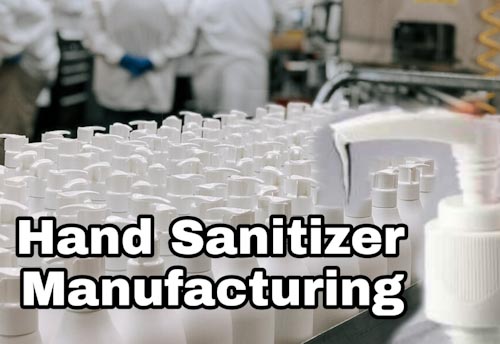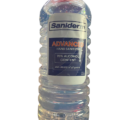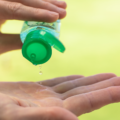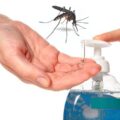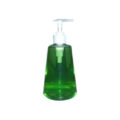The Coronavirus outbreak has caused scarcity of many essential sanitary items leading to panic in many countries. Unscrupulous individuals have also cashed in on the crisis to exploit individuals while the malevolent one release all manner of toxic hand sanitizers into the market.
According to WHO, Current evidence indicates that the COVID-19 virus is transmitted through respiratory droplets or contact. Contact transmission occurs when contaminated hands touch the mucosa of the mouth, nose, or eyes; the virus can also be transferred from one surface to another by contaminated hands, which facilitates indirect contact transmission. Consequently, hand hygiene is extremely important to prevent the spread of the COVID19 virus. It also interrupts transmission of other viruses and bacteria causing common colds, flu and pneumonia, thus reducing the general burden of disease. Although awareness of the importance of hand hygiene in preventing infection with the COVID-19 virus is high, access to hand hygiene facilities that include alcohol-based hand rubs OR sanitizer as well as soap and water is often suboptimal in the community and in health care facility settings, especially in low-and middle-income countries hence the need to harness local capacity to enhance availability.
To be effective at killing germs, hand sanitizer must be at least 60% alcohol. In commercially-made products, alcohol concentration is measured with an alcohol meter. Although hand sanitizers can be an effective way of getting rid of germs, health authorities still recommend hand washing whenever possible to keep your hands free of disease-causing viruses and other germs.
Key ingredients in a Hand Sanitizer and their Uses
Isopropyl alcohol or Ethanol: these are both disinfecting agents. For disinfecting surfaces, ethanol and isopropyl alcohol are nearly equally efficient. Ethanol may be used in purely surface-cleaning applications, but isopropyl alcohol can also double as antiseptic. It should be noted that methanol or wood alcohol must never be used in the preparation or production of hand sanitizer because of its toxicity.
Glycerol: used as humectant, but other emollients may be used for skin care, provided that they are cheap, widely available and miscible in water and alcohol and do not add to toxicity, or promote allergy.
Hydrogen peroxide: used to inactivate contaminating bacterial spores in the solution and is not an active substance for hand antisepsis.
Any further additive to both formulations should be clearly labelled and be non-toxic in case of accidental ingestion. A colorant may be added to allow differentiation from other fluids but should not add to toxicity, promote allergy, or interfere with antimicrobial properties. The addition of perfumes or dyes is not recommended due to risk of allergic reactions.
Guide To Local Production Of Hand Sanitizer
Materials required (small volume production)
| Reagents for Formulation 1
|
Reagents for Formulation 2
|
| Ethanol 96% | Isopropyl alcohol 99.8% |
| Hydrogen peroxide 3% | Hydrogen peroxide 3% |
| Glycerol 98% | Glycerol 98% |
| Sterile distilled or boiled cold water | Sterile distilled or boiled cold water |
- 10-litre glass or plastic bottles with screw-threaded stoppers , or
- 50-litre plastic tanks (preferably in polypropylene or high density
polyethylene, translucent so as to see the liquid level) , or
- Stainless steel tanks with a capacity of 80–100 litres
(for mixing without overflowing)
- Wooden, plastic or metal paddles for mixing
- Measuring cylinders and measuring jugs
- Plastic or metal funnel
- 100 ml plastic bottles with leak-proof tops
- 500 ml glass or plastic bottles with screw tops
- An alcoholometer: the temperature scale is at the bottom and the ethanol concentration (percentage v/v) at the top. READ: Does Hand Sanitizer Repel Mosquitoes
Guide To Local Production: Who-Recommended Hand rub Formulations
METHOD: 10-LITRE PREPARATIONS
These can be prepared in 10-litre glass or plastic bottles withscrew-threaded stoppers.
Step by step preparation
Step 1. The alcohol for the formula to be used is poured into the large bottle or tank up to the graduated mark.
Step 2. Hydrogen peroxide is added using the measuring cylinder.
Step 3. Glycerol is added using a measuring cylinder. As glycerol is very viscous and sticks to the wall of the measuring cylinder, it should be rinsed with some sterile distilled or cold boiled water and then emptied into the bottle/tank.
Step 4. The bottle/tank is then topped up to the 10-litre mark with sterile distilled or cold boiled water.
Step 5. The lid or the screw cap is placed on the tank/bottle as soon as possible after preparation, in order to prevent evaporation.
Step 6. The solution is mixed by shaking gently where appropriate or by using a paddle.
Step 7. Immediately divide up the solution into its final containers
(e.g. 500 or 100 ml plastic bottles), and place the bottles in quarantine for 72 hours before use. This allows time for any spores present in the alcohol or the new/re-used bottles to be destroyed.
Tips For Making Hand Sanitizer
- Make the hand sanitizer in a clean space.
- Wipe down counter tops with a diluted bleach solution beforehand.
- Wash your hands thoroughly before making the hand sanitizer.
- To mix, use a clean spoon and whisk. Wash these items thoroughly before using them.
- Make sure the alcohol used for the hand sanitizer is not diluted.
- Mix all the ingredients thoroughly until they’re well blended.
- Don’t touch the mixture with your hands until it’s ready for use
SEE: Eskbiochem: 7 Things Methanol Exposure Can Cause


